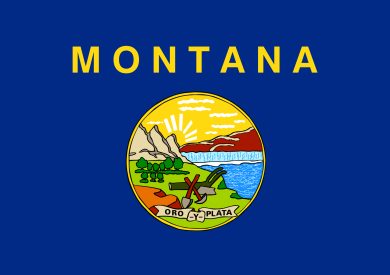
 Popular Cities For Lending in Montana
Popular Cities For Lending in Montana
In the Montana real estate market, grabbing properties before your competition is essential for making the best deals. Although real estate investors sometimes go the traditional route and seek bank loans, the process is anything but speedy.
When time is of the essence, waiting for the lengthy process of getting approval is not an option for most investors. Montana hard money lenders specialize in providing hard money loans which provide quick funds to investors. These loans are for a non owner occupied property or in some cases for business purpose loans.
Montana Hard Money Lender FAQ’S
Below are some of the most frequently asked questions we get regarding hard money loans and lenders in Montana.
What Do Montana Hard Money Lenders Specialize in?
Montana hard money lenders specialize in providing short-term, creative financing for real estate investors. If you seek a conventional lender to purchase an investment property, your loan request will be based on the property’s value and your assets. Your credit score, job, and finances will be scrutinized intensely. Hard money lenders base their final loan decisions on the after-repair value. The ARV represents the potential value of a property after all repairs have been accomplished.
What are the Benefits of Montana Hard Money Loans?
Montana hard money loans offer advantages that traditional banks cannot. Lenders like Acamnet Financial offer a higher level of flexibility than banks. When qualifying for this type of loan, lenders do not delve too deeply into the finances of real estate investors. In most cases, simply present the property and your plans, which saves you the hassle of gathering countless financial documents.
Do Montana Hard Money Lenders Look at my Credit Score?
One of the greatest benefits of working with Montana hard money lenders is the lack of credit score requirements. One of the first things a bank does is check your credit score. You can get approved for a hard money loan in Montana even if you have bad credit or poor credit, bankruptcies, and foreclosures in the past. Montana Hard money lenders primarily care about the property you are purchasing.
What is the Interest Rate & Points for Hard Money Loans in Montana?
Interest rates for hard money loans in Montana are typically higher than traditional bank loans (conventional loans) because of the greater risk lenders must take on when approving loans. When searching for a hard money lender near me in Montana, you will find average interest rate is between 8%-15%. You should also be aware that lenders sometimes charge points that are meant to offset their administrative costs. Each point represents 1% of the total loan amount. The average points lenders charge is between 1 to 3. Some lenders may charge up to 10 points. These points are due upfront or at closing, depending on the lender.
What Should I Look for in a Montana Hard Money Lender?
There are many benefits to working with a Montana hard money lender. You just need to make sure you are working with the right lender. You can rely on Acamnet Financial Group when you need us most. We offer reliability, consistency, experience, and support. As a real estate investor, you know the importance of grabbing the best property deals when they become available.
How can Hard Money Lenders in Montana Help Me?
Whether you are new to real estate and real estate projects or an old pro, you know having the capital to purchase real estate is essential. Without funds, you will miss out on real estate transactions. When you partner with hard money lenders in Montana, you will quickly get the money you need without jumping through the hoops of traditional bank lenders.
How do I get a Hard Money Loan in Montana?
When you want a hard money loan in Montana, begin by preparing the property information. Location, size, purchase price, after repair value, repair costs, etc. In most cases, the financing will be based on these numbers. Then, apply for a hard money loan in Montana using this information and supply some financial information. Then, an appraisal will be ordered to assess the loan-to-value ratio, which will influence the loan amount.
How do I Refinance a Montana Hard Money Loan?
Refinance a Montana hard money loan will involve moving from a high interest, short term loan to a longer term, usually lower interest rate loan. Typically a conventional type of loan. When refinancing a Montana hard money loan you will find it will have a more stringent set of guidelines. You will need to have sufficient credit and income qualifications. As the lending landscaping and regulations constantly change, you want to consult a knowledgeable conventional loan expert.

Current Real Estate Trends In Montana (2024)
The Montana real estate market has seen impressive growth over the past few years, due to an increase in people relocating to the state for its picturesque environment and economic opportunities.
However, some have raised questions about how sustainable this growth is and whether or not it could lead to a housing market crash. Several factors contribute to these fears, such as a sharp rise in home values, affordability issues, a limited pool of potential buyers, and a slowing of demand.
Furthermore, the availability of homes for sale in popular cities like Bozeman and Missoula has decreased, leading to high competition and further pushing up of prices.
Despite these worries, it is unlikely that a housing market crash will occur in 2023. This is due to the expected population growth, Montana’s strong economy and low unemployment rate, and the stability the housing market has shown in past economic downturns.
As such, the Montana real estate market appears to be on a solid path to continued success, backed by strong fundamentals and a growing population.
Market Conditions
Montana’s real estate market is showing a combination of trends. There is an uptick in sales but price growth and list prices are lackluster, suggesting a market more favorable for purchasers.
There seems to be a larger stock of inventory on the market, which is advantageous for buyers. Unfortunately, the increases in sales prices have been quite small, meaning sellers may need to adjust their expectations.
Ultimately, Montana’s current market climate affords buyers chances to find a great deal.
Housing Inventory
The availability of homes for sale in Montana has dropped significantly, creating difficulties for those looking to purchase.
This reduction in housing inventory has resulted in a scarcity of options for buyers, leading to increased competition within the market.
Consequently, the limited supply of homes has caused home prices to rise.
Economic Impact
The competition among buyers has intensified and home prices have jumped due to the dwindling housing inventory. In popular cities such as Bozeman and Missoula, the limited selection of homes has made it difficult for buyers to find suitable properties, leading to bidding wars and an overall rise in prices. This creates a seller’s market, giving sellers the upper hand and further contributing to the home price increase. The lack of inventory has made it hard for buyers to find a home and has significantly impacted home prices.
Sources
https://www.noradarealestate.com/blog/montana-housing-market/
https://www.windermere.com/market-update/montana
https://www.houzeo.com/blog/montana-real-estate-market/

All About Montana
Montana is renowned for its expansive landscapes, diverse topography, and natural splendor in the Mountain West division of the Western United States. Boasting mountain ranges in the west and prairie terrain in the east, the state offers awe-inspiring vistas and a wide array of outdoor recreational opportunities.
Anchored by an agricultural foundation centered around ranching and cereal grain farming, Montana’s economy relies heavily on its abundant oil, gas, coal, mining, and timber reserves. Moreover, the burgeoning tourism sector draws millions of visitors annually.
The state’s history is deeply rooted in the interactions between indigenous peoples and early European, Canadian, and American traders. The establishment of Montana Territory in 1864 spurred the development of towns, mining operations, and the exploration that ultimately led to the establishment of Yellowstone National Park in 1872. However, the state’s settlement had conflicts over land ownership and control, necessitating the involvement of the U.S. Army in maintaining peace.
Montana’s distinctive dimensions, population, and geographical coordinates contribute to its unique allure and character.
Geography
Montana’s geography is characterized by its diverse landscape, including mountain ranges in the west and prairie terrain in the east, contributing to its reputation as Big Sky Country and attracting millions of tourists each year to explore its natural beauty.
The western part of the state is dominated by the Rocky Mountains, with prominent ranges such as the Bitterroot Range, the Absaroka Range, and the Cabinet Mountains. These majestic peaks offer breathtaking vistas, hiking trails, and opportunities for outdoor recreation.
In contrast, the eastern part of Montana features vast stretches of prairie, known as the Great Plains, with rolling hills and grasslands.
This diverse geography provides a range of ecosystems, wildlife habitats, and scenic landscapes that make Montana a paradise for nature lovers and outdoor enthusiasts.
Transitioning to the subsequent section about ‘nicknames,’ Montana’s geographic features have inspired various monikers that reflect its natural splendor and allure.
Nicknames
Unofficially known as Big Sky Country, The Treasure State, Land of the Shining Mountains, and The Last Best Place, Montana’s nicknames reflect its picturesque landscapes and abundant resources. These nicknames capture the essence of Montana’s natural beauty and serve as a testament to its remarkable scenery.
‘Big Sky Country’ highlights the expansive open skies that stretch across the state, offering breathtaking views of the horizon.
‘The Treasure State’ emphasizes Montana’s rich resources, including gold, silver, and other minerals that have attracted prospectors for centuries.
‘Land of the Shining Mountains’ showcases the majestic mountain ranges that dominate the state’s western region.
Lastly, ‘The Last Best Place’ encapsulates Montana’s reputation as a haven for outdoor enthusiasts and nature lovers.
Transitioning to the next section, Montana’s economy thrives on its diverse resources and thriving tourism industry.
Economy
The economy of Montana is a thriving mix of industries, including agriculture, natural resource extraction, healthcare, and tourism.
Agriculture plays a significant role in the state’s economy, with ranching and cereal grain farming being major contributors.
Montana also has abundant resources in oil, gas, coal, mining, and lumber, which support the extraction industry.
The healthcare sector is a vital component of the state’s economy, providing employment and services to residents.
Additionally, tourism is a rapidly growing sector in Montana, with the state’s natural beauty and outdoor recreational opportunities attracting millions of visitors yearly.
The diverse economy of Montana reflects the state’s rich resources and offers a range of opportunities for residents and businesses.
Transitioning into the next section, Montana’s etymology reveals its name’s historical origins.
Etymology
Originating from the Spanish word ‘montaña,’ the name Montana was adopted as the state’s official name in 1863, despite debates and objections.
Early Spanish explorers referred to the entire mountainous region of the west as ‘Montaña del Norte.’
When the United States House Committee on Territories added the name Montana to a bill in 1863, there were discussions and objections about the chosen name. However, the Committee on Territories had the authority to determine the name, and Montana was ultimately selected.
Some alternative names were suggested, but they needed to gain more support.
The adoption of the name Montana reflects the state’s diverse landscape, with its prominent mountain ranges.
This decision paved the way for Montana’s rich history, which includes the arrival of European, Canadian, and American traders, conflicts with indigenous peoples, and the establishment of permanent settlements.
History
During the 19th century, Montana witnessed the arrival of European, Canadian, and American traders, leading to conflicts with indigenous peoples and the establishment of permanent settlements.
Various indigenous tribes, including the Crow, Cheyenne, Blackfeet, Assiniboine, Gros Ventres, Kootenai, and Salish, inhabited the region for thousands of years before European contact. The fur trade, operated by these traders, brought about conflicts with indigenous peoples over land ownership and control.
In 1841, the first permanent settlement by Euro-Americans was established in Montana. The discovery of gold in the 1860s sparked significant gold rushes, attracting thousands of miners to the area. This led to the establishment of towns and mining operations, further shaping the history of Montana.
The conflicts and interactions between settlers and indigenous peoples during this period played a significant role in the state’s development.


 Popular Cities For Lending in Montana
Popular Cities For Lending in Montana